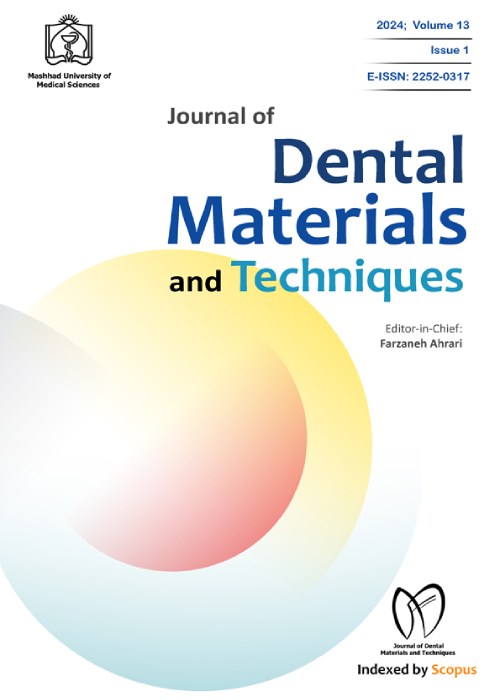Shear bond strength evaluation of resin composite to resin-modified glass-ionomer cement using three different resin adhesives vs. glass-ionomer based adhesive
Author(s):
Abstract:
Background
The clinical success of sandwich technique depends on the strength of resin-modified glass ionomer cement (RMGIC) bonding to both dentin and resin composite. Therefore, the shear bond strength (SBS) of resin composite bonded to RMGIC utilizing different resin adhesives versus a GIC-based adhesive was compared. Materials And Methods
In this in vitro study, 84 holes (5×2 mm) were prepared in acrylic blocks, randomly divided into seven groups (n=12) and filled with RMGIC (Light-Cured Universal Restorative, GC). In the Group I; no adhesive was applied on the RMGIC. In the Group II, non-etched and Group III was etched with phosphoric acid. In groups II and III, after rinsing, etch-and-rinse adhesive (OptiBond Solo Plus); in the Group IV; a two-step self-etch adhesive (OptiBond XTR) and in Group V; a one-step self-etch (OptiBond All-in-One) were applied on the cement surfaces. Group VI; a GIC-based adhesive (Fuji Bond LC) was painted over the cement surface and cured. Group VII; the GIC-based adhesive was brushed over RMGIC followed by the placement of resin composite and co-cured. Afterward; resin composite (Point 4) cylinders were placed on the treated cement surfaces. The specimens were placed in 100% humidity at 37 ± 1°C and thermo cycled. The shear bond test was performed at a cross-head speed of 1 mm/min and calculated in MPa; the specimens were examined to determine mode of failure. The results were analyzed using one-way ANOVA and Tukey test. Results
The maximum (24.62±3.70 MPa) and minimum (18.15±3.38 MPa) SBS mean values were recorded for OptiBond XTR adhesive and the control group, respectively. The pairwise comparisons showed no significant differences between the groups that bonded with different adhesives. The adhesive failure was the most common failure mode observed. Conclusion
This study suggests that GIC-based adhesive could be applied over RMGIC as co-cure technique for sandwich restorations in lieu of employing the resin adhesivesKeywords:
Language:
English
Published:
Journal of Dental Materials and Techniques, Volume:4 Issue: 4, Autumn 2015
Pages:
153 to 160
magiran.com/p1447617
دانلود و مطالعه متن این مقاله با یکی از روشهای زیر امکان پذیر است:
اشتراک شخصی
با عضویت و پرداخت آنلاین حق اشتراک یکساله به مبلغ 1,390,000ريال میتوانید 70 عنوان مطلب دانلود کنید!
اشتراک سازمانی
به کتابخانه دانشگاه یا محل کار خود پیشنهاد کنید تا اشتراک سازمانی این پایگاه را برای دسترسی نامحدود همه کاربران به متن مطالب تهیه نمایند!
توجه!
- حق عضویت دریافتی صرف حمایت از نشریات عضو و نگهداری، تکمیل و توسعه مگیران میشود.
- پرداخت حق اشتراک و دانلود مقالات اجازه بازنشر آن در سایر رسانههای چاپی و دیجیتال را به کاربر نمیدهد.
In order to view content subscription is required
Personal subscription
Subscribe magiran.com for 70 € euros via PayPal and download 70 articles during a year.
Organization subscription
Please contact us to subscribe your university or library for unlimited access!


